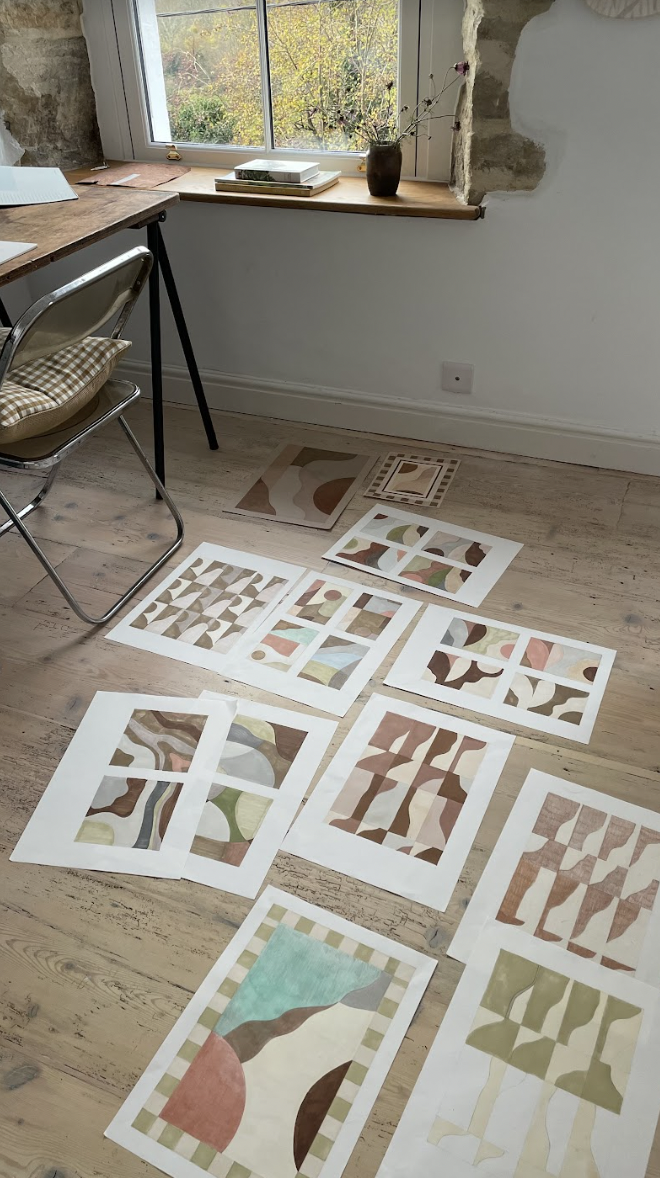Chelsea Vivash and the longevity of craft...
The second of our Autumn creative residents last year was the lovely marquetry artist Chelsea Vivash. We popped up to the cottage to see what she was up to during her stay…
Arriving on a grey Monday Chelsea explained to us she how she had instantly found joy in retreating to the cosy interiors of the cottage; exploring the objects and furniture through drawing. Her work combines an attentive eye for colours and texture with the stunningly beautiful craft of Marquetry. Paper thin sheets of wood are cut and collaged together with painstaking precision and later sanded and glazed to create a smooth surface. It was a process we fell in love with instantly when we saw her application images.
Cup of tea in hand we poured over the geometric sketches laid out on the bed upstairs, noting that they have a softer feel in comparison to some of Chelsea’s other work. Whilst she didn’t intentionally take reference from the view outside the window, for some reason many of the drawings feel more like landscapes. ‘There also is something almost 1960s or 1970s about these’ she remarks as we look at a set that have the hint of a power flower motif . It’s a subtle touch (a great phrase to describe all of her work) but the brown, beige and khaki layers do feel somewhat retro.
Historically there has always been challenge for craftspeople to be taken seriously when set against other more conceptual or traditionally recognised artistic practices. Chelsea seems to have hit a perfect balance: her work is universally appealing and her craftsmanship shines, yet it also sits beautifully within a very reputable niche.
In touching on this I begin to think about the idea that to become a master at craft you must invest many hours; weaving, chiseling, knotting your way to greater results. I am reminded of a distinctly Japanese attitude to honing a skill such as Marquetry. There is a sense of calm almost ritualistic approach towards the process.
The most rewarding thing about working as a ‘craftsperson’ is really that there can be no ceiling to making work. If the practice is the process then you can move forwards simply by getting better, learning more about how others approached the same materials and push boundaries from within a very tight set of constructs centred on technique. Having a focus such as this can be liberating for a creative and also make the working process less lonely.
There is a sense of community among artists working in technique driven practices and a common desire to share and spread the joy of making with others.
Over the past 5 years the ‘creative workshop’ market has exploded as artisans have learned that their skills can be shared more readily and that there is a genuine need for people to find some connection to their hands as we live increasingly through screens. In many ways this has provided an interesting dichotomy for artists - there is a new direction in which to expand our practices and (perhaps more crucially) fund them. Chelsea and I both run workshops as part of our work and it was interesting to hear her perspective on how she balances these with her own practice and how teaching others can inform your own process.
See more of Chelsea’s work HERE
Follow her @chelsea_vivash








